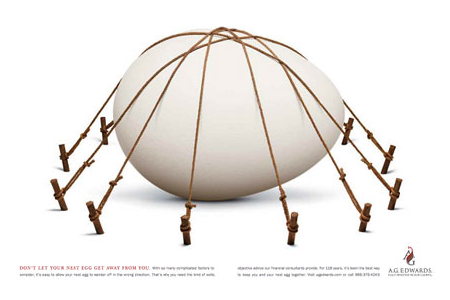Revive or reimagine a cliché
Call it a cliché makeover.

Warren Buffett, chairman of Berkshire Hathaway, breathes new life into old, worn-out phrases in a letter to shareholders. His secret: extending the original metaphor the cliché was based on:
Scott Moser, the CEO of Equitas, summarized the transaction neatly: “Names wanted to sleep easy at night, and we think we’ve just bought them the world’s best mattress.”
By extending the cliché “sleep easy at night” with “the world’s best mattress,” Buffett gives this tired phrase new life. (Back story: Berkshire reinsured Equitas so its “names,” or underwriters, don’t have to worry about huge claims bankrupting the firm and themselves).
A metaphor is a figure of speech that helps people make a semantic shift, aka think differently about your topic. Cliché — also called dead metaphors — just make readers eyes glaze over.
Next time you find yourself writing a historical metaphor (time is running out, flying off the handle, head over heels, max black), try one of these approaches to resurrecting a metaphor:
1. Reinvent a cliché.
A.G. Edwards uses this technique in its Silver Anvil-winning “nest egg” ad series. The investment firm reinvents one of my least-favorite clichés by making it visual and extending it as far as it can go.

Instead of eliminating your next cliché, see if you can take it further. By doing so, you might just resurrect it.
2. Refresh a cliché.
You might also try refreshing a cliché. To refresh a cliché:
- Circle all the clichés in your message
- Refresh them by writing a new ending
Get inspiration from this list. Story goes that it was created when a first-grade teacher collected clichés and asked her students to come up with new endings for tired clichés.
- A penny saved is … not much
- Better safe than … punch a fifth-grader
- Don’t bite the hand that … looks dirty
- If at first you don’t succeed … get new batteries
- It’s always darkest before … Daylight Savings Time
- You can lead a horse to water but … how?
- You can’t teach an old dog new … math
Hey! If a group of first-graders can do it, imagine how engaging your “new clichés” will be.
3. Twist a cliché.
You can also “Twist a cliche.” To do that, sub out a traditional word in the cliché for a new one.
Instead of dog tired, for instance, ask, “Who else is really tired? New mothers? People working double shifts? Hospital interns?”
4. More ways to revive a cliché.
Here are four more ways to breathe new life into old, worn-out phrases in the body of an essay:
- Reverse a cliché. Replace a key word in the cliché with one that means the opposite. One character on “The Closer,” for instance, “compliments” another on a eulogy: “There wasn’t a wet eye in the house.”
- Combine clichés. Put two clichés together to create a fresh phrase. Lyrics to one “Flight of the Conchords” song, for instance, go, “The fork in the road cuts like a knife.”
- Twist a cliché. Go through the letters of the alphabet to change the word. Or rearrange the letters in the word. Or add an incorrect word or phrase. Or substitute a double-entendre for a common word.
What dead metaphor can you resurrect in your own message?

Leave a Reply